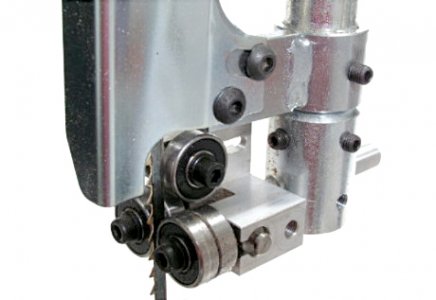I have a question for the woodworkers.
I've been ripping some 3/4 oak boards with a Delta Shopmate table saw. I put a new Irwin 24 tooth blade on it and noticed the blade starts vibrating kinda like a harmonic. This makes my cuts uneven and a mess. When I saw this first happening I turned the saw off and checked for anything loose - all tight. I've gotten some advice saying the saw is low grade or the blade is cheap, or I need blade stiffeners.
So I borrowed my dad's heaver all metal table saw and it does the same thing. I should add that both blades cut good with not stalling or smoke. The blade's rpm rating is 6000, the saw is 4600 so I'm not exceeding the blade's rpm.
Have any of you noticed this? If so, how did you fix it?
Thanks!
I've been ripping some 3/4 oak boards with a Delta Shopmate table saw. I put a new Irwin 24 tooth blade on it and noticed the blade starts vibrating kinda like a harmonic. This makes my cuts uneven and a mess. When I saw this first happening I turned the saw off and checked for anything loose - all tight. I've gotten some advice saying the saw is low grade or the blade is cheap, or I need blade stiffeners.
So I borrowed my dad's heaver all metal table saw and it does the same thing. I should add that both blades cut good with not stalling or smoke. The blade's rpm rating is 6000, the saw is 4600 so I'm not exceeding the blade's rpm.
Have any of you noticed this? If so, how did you fix it?
Thanks!


